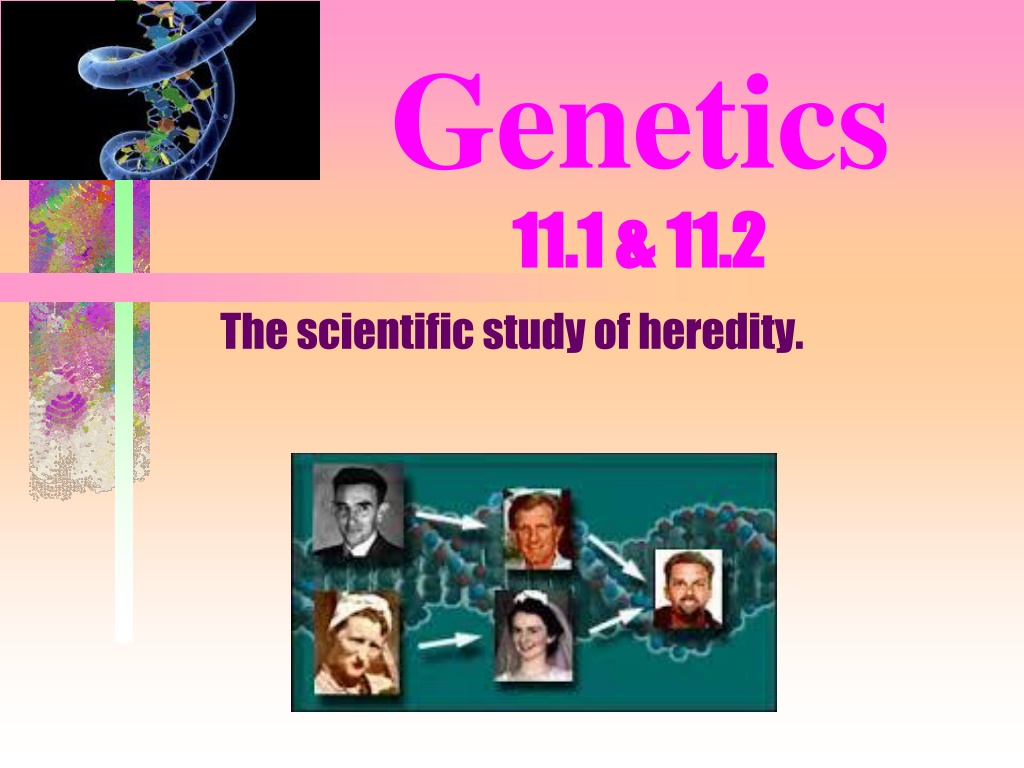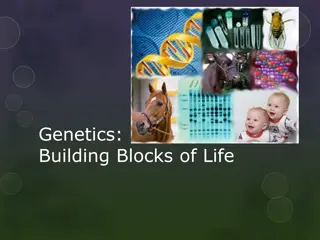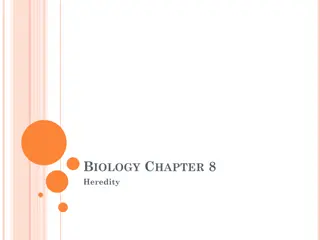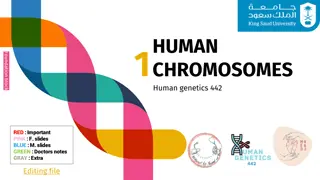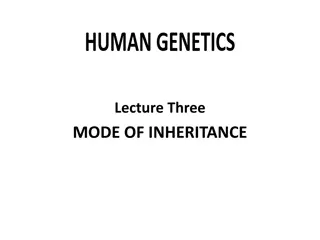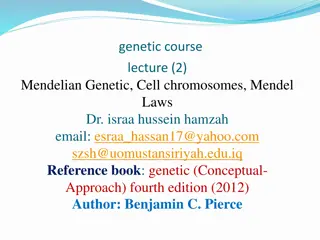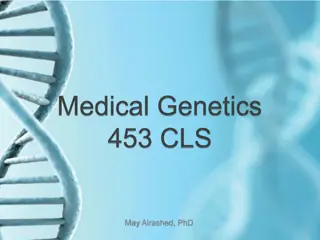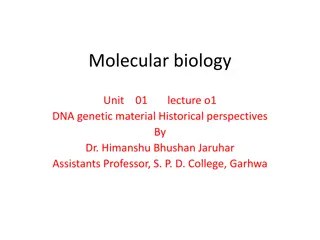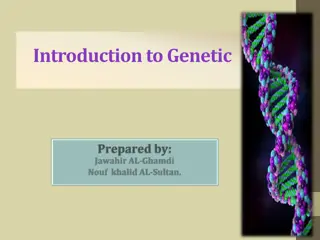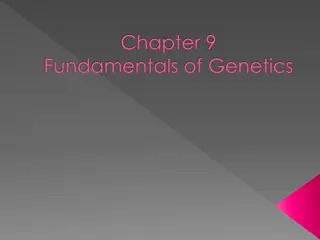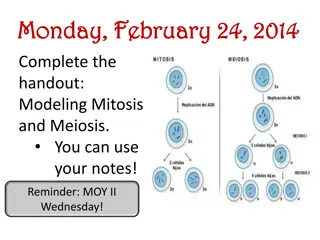Understanding Genetics: The Study of Heredity and Mendel's Discoveries
Explore the fascinating world of genetics through the scientific study of heredity and the groundbreaking work of Gregor Mendel, the Father of Genetics. Learn about hereditary traits, the role of fertilization, Mendel's experiments with pea plants, and the concepts of genes and alleles that shape biological inheritance.
Uploaded on Sep 28, 2024 | 0 Views
Download Presentation

Please find below an Image/Link to download the presentation.
The content on the website is provided AS IS for your information and personal use only. It may not be sold, licensed, or shared on other websites without obtaining consent from the author. Download presentation by click this link. If you encounter any issues during the download, it is possible that the publisher has removed the file from their server.
E N D
Presentation Transcript
Genetics 11.1 & 11.2 11.1 & 11.2 The scientific study of heredity.
What is Heredity ? The passing of traits from parents to their offspring
1860s: Gregor Mendel Father of Genetics Mendel figured out how traits are passed on before we knew about DNA, or chromosomes or meiosis
Mendelstudied heredity with pea plants Why pea plants? (was it luck?) 1. Small 2. Easy to grow 3. Produces large numbers of offspring 4. Matures quickly 5. Plants can self or cross fertilize 6. Many varieties 7. Each trait has two forms Tall/short green/yellow seeds green/yellow seed pods wrinkled/smooth seed purple/white flowers colored/white seed coat inflated/narrowed seed pod
The Role of Fertilization Male part of each flower makes pollen, which contains sperm the plant s male reproductive cells. Female portion of each flower produces reproductive cells called eggs.
To begin, Mendel self fertilized to create pure breeding plants Purple all pure purple white all pure white
First Cross Cross: pure purple with pure white Cross fertilized P (Parental) generation Pure purple with pure white purple white X All purple P Generation F1 Generation
Second Cross: Cross 2 F1 plants Cross fertilized two of the offspring of the F1 generation purple purple purple purple X These were the F2 purple white This was always 3:1 ratio or out of 929, 705 : 224
Genes and Alleles All of Mendel s crosses had the characteristics of only one of their parents. An individual s characteristics are determined by factors (genes) that are passed from parent to offspring
Mendels Experiments led him to 3 Laws of Inheritance The Law of Dominance The Law of Segregation The Law of Independent Assortment
The Law of Dominance: Each individual has TWO factors for each trait known as alleles @Some alleles dominate over others the dominant allele is expressed in the offspring@ These are alleles Freckles No Freckles No dimples Dimples Non-roller Tongue roller From Dad From Mom
Alleles are: Represented by a letter of the alphabet Capital = dominant allele A lowercase = recessive allele a - Each allele represent different forms of the gene
Law of Segregation The two alleles for each trait separate and move into different gametes meiosis Since only one egg or one sperm will contribute to the new offspring, only one allele for a trait is passed on The chance that any allele will be passed on is 50%
Law of Independent Assortment the inheritance of alleles for one trait doesn t affect the inheritance of alleles for another trait - occurs in meiosis during metaphase 1 Ex: Eye color traits will not affect a person s hair color.
The Two-Factor Cross: F2 Mendel s experimental results were very close to the 9:3:3:1 ratio
Genotype: Genotype is the combination of alleles for a particular expressed with letters Homozygous dominant: TT - two capital letters Heterozygous Tt - one of each letter (big and small) Homozygous recessive tt - two lower case letters
Phenotype: Phenotype is physical expression of the genotype Genotype Phenotype TT tall plant Tt tall plant (dominant allele always is expressed over the recessive allele) tt short plant (recessive trait is expressed only if there is no dominant gene)
If R = red, and r = white What is the genotype of homozygous dominant? RR What is the heterozygous genotype? Rr What is the homozygous recessive genotype? rr
If R=red and r =white What is the phenotype of of RR? Red What is the phenotype of Rr? Red What is the phenotype of rr? White
If two parents are crossed (TT X tt), what are the resulting offspring? You can determine phenotypes using a Punnet square. T T parent Tt Tt t Genotypes: 4 Tt Phenotypes: 4 Tall Tt Tt t This is the first or parent generation parent
Now try on your paper a cross of two of the offspring from the parent generation. This is called the first generation or the F1. T t T Tt TT Tt tt t Genotypes: 1TT: 2Tt : 1tt Phenotypes: 3 Tall: 1 Short.
